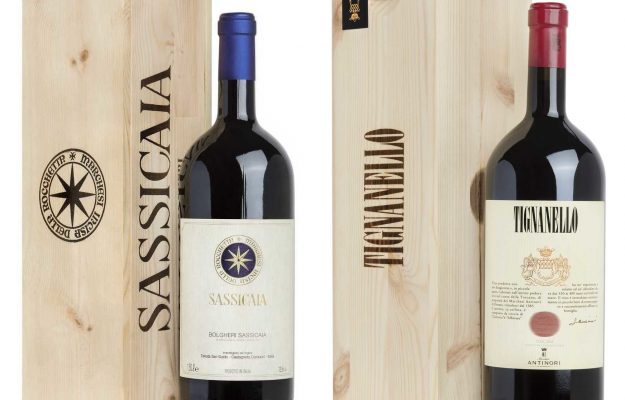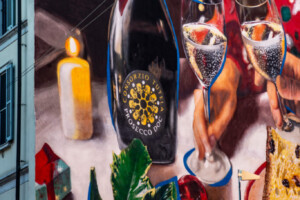In a niche but important market like that of investments in fine wines, trends can change abruptly, following evaluations on vintages, rankings, passions, but also logic that can be purely economic, if not speculative. And so, the substantial upheaval in the “Liv-Ex Power 100”, signed by the Liv-Ex platform, a reference of the secondary market, in partnership with “The Drinks Business Magazine”, which annually lines up the “most powerful” brands in the fine wine market, should come as no surprise. The top performer in this edition is Burgundy, which, in the ranking, places as many as 39 wines, its all-time high, 6 more than in 2021, while Bordeaux, with 25 (-5), and Italy, with 12 (-2), now trailed by Champagne at 9 (+1), and with the U.S. rising to 8 (+2), fall back the most.
“For the first time ever, no wine from Bordeaux figures in the Top 10”, Liv-Ex points out. The top 10 positions, in fact, are all from Burgundy and Champagne (another territory experiencing great growth): at the absolute top, there is Leory, ahead of Arnoux-Lachaux, Leflaive, Armand Rousseau, Prieure Roch, Dom Perignon, Louis Roederer, Romanee-Conti, Jaques-Frederic-Mugnier and Krug. Among the Italians, the top brand remains Tenuta San Guido, or Sassicaia, at position No. 30, ahead of Giacomo Conterno (32), where the legendary “Monfortino” is made, but not only, and then Gaja (39), reference of Barbaresco, and again Masseto (40), top brand of the Frescobaldi group, Bartolo Mascarello (42), while climbing in the “Top 50” is Antinori’s Tignanello, at No. 49, which is not only one of the very few Italian wines to improve its position on 2021 (it was at No. 65), but is also the Italian wine with the best absolute performance, “thanks to the combination of a high volume of trade (seventh place overall) and therefore a high total commercial value. And it is the “cheapest” Italian wine in the Top 100, with an average box price of £1,076”, explains Liv-Ex. Still, the “Top 100” for Italy includes other top brands such as Comm. G.B. Burlotto (No. 57), Bruno Giacosa (60), Ornellaia (80), Quintarelli (No. 84, and Italian wine that has grown the most since 2021, climbing a whopping 98 positions), Giuseppe Rinaldi (85), and Poggio di Sotto, one of the historical references for Brunello di Montalcino (No. 96, another monstrous growth over 2021, when it was No. 167).
Also just outside the “Top 100”, but still within the ranks of those few dozen labels that are part of the “ghota” of investment wines, are Antinori’s Solaia, La Spinetta, the cradle of Brunello di Montalcino, Biondi Santi, and Giuseppe Mascarello e Figlio. With an Italian wine summit that speaks, once again, of Tuscany (with Montalcino and the Supertuscans, especially from Bolgheri), Piedmont (Langhe) and Veneto (Valpolicella).
Explaining the overall Italian retreat, according to Liv-Ex’s analysis, are several factors. Starting with the fact that Italian labels no longer benefited from the advantageous situation derived from being excluded from the Duties imposed by the U.S. in the notorious Airbus-Boing affair, which had affected, instead, French wines, making those of Italy more attractive between 2019 and the beginning of 2021. And this also explains why the market share on the Liv-Ex of Italian wines dropped from 15% to 11%. In any case, nothing is forever, and indeed, things are bound to change again, as Liv-Ex’s mananging editor Rupert Millar suggests: “already the direction of the market in 2022 suggests that change is coming. Just as we saw in 2019, the latest surge in Burgundy may be dizzying, but it could be quickly stalled by a lack of supply and a growing reluctance to pay such high prices for handfuls of bottles. The higher you fly, the thinner the air, and the fewer the buyers”.
Indeed, the difficulties in the market are there, Liv-Ex explains, “and further price increases may not be so easy to achieve. After several record years of market expansion, the growth rate this year, as measured by the number of wines marketed and qualified for the Power 100, was not as high as last year. Between October 1, 2021, and September 30, 2022, 12,332 wines from 1,694 producers were marketed, an increase of 4.2% and 1.6%, respectively, compared to the same period last year. The number of wines eligible for inclusion in the ranking, was 422, an increase of just 0.3 percent. Overall, however, the market continues to welcome new wines from around the world, and the market remains larger and more balanced than a decade ago.
To make the Power 100, the performance of individual wines, grouped under the producer brand, were analyzed among those that had at least three wines or vintages on the list and a total commercial value of at least 10,000 pounds. Brands were ranked according to four criteria: annual price performance (based on the market price of a case of wine as of October 1, 2021 with its market price as of September 30, 2022); commercial performance on Liv-ex (by value and volume); number of wines and vintages marketed; and the average price of a brand’s wines.
Copyright © 2000/2025
Contatti: info@winenews.it
Seguici anche su Twitter: @WineNewsIt
Seguici anche su Facebook: @winenewsit
Questo articolo è tratto dall'archivio di WineNews - Tutti i diritti riservati - Copyright © 2000/2025









































































































































































































